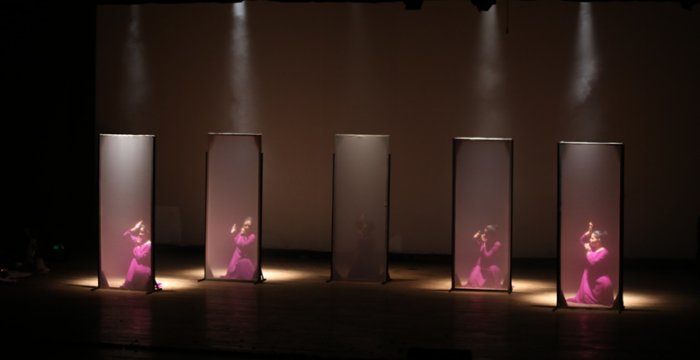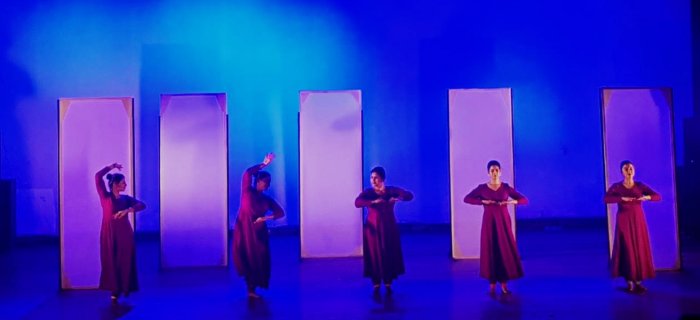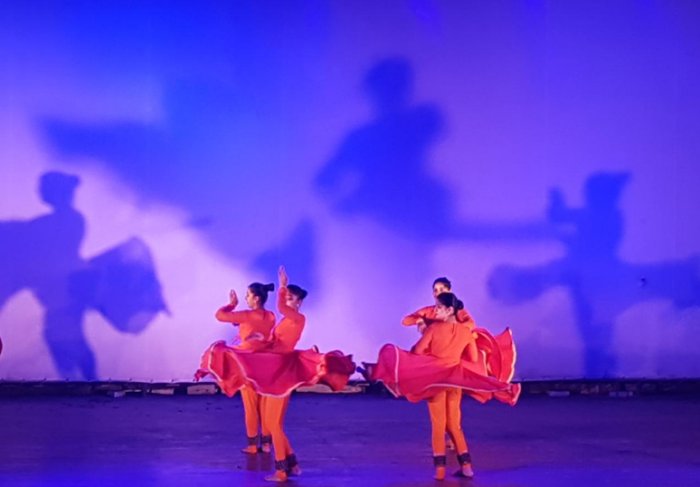
|   |

|   |
Modest choreographic surprises at Shubha Desai's annual event - Dr. S.D. Desai e-mail: sureshmrudula@gmail.com May 4, 2019 A small wonder that accomplished Kathak dancer Shubha Desai did not happen to have invited attention as a choreographer all these years. A disciple of Kumudini Lakhia and of Pt Birju Maharaj later, she has been teaching Kathak to kids, teenagers, professionals and housewives for over twenty-five years with a low profile. Instead of a choreographic work or two, this year (April 24) at the annual event of her dance centre - time she named it - there were as many as five short but noteworthy works with glimpses of a thematic focus in the second half of the evening's performance at the Tagore Auditorium, Ahmedabad.   The choreographies with costumes by Shubha and Astha are exploratory. Taal Tarang explores nritta (Priyata and others) in a rising tempo with matras multiplying in pretty pleasing group formations culminating in what compere Chirayu Trivedi in his characteristically subdued style at times getting ornate described as chaugalbandi. Laya-gati invited attention to the oneness that movement and rhythm achieve in classical dance. When at their graceful best, one discerns movement within a flowing laya and laya within a measured movement. The process of achieving it brings joy to the dancers and for the audience it must have been a delight to see their red skirts flaring out in circular shapes as they performed pirouettes in sync with rhythm (Rahul Shastri, Raag Gandhi...).  The association between static and fluid designs is what students of the National Institute of Design (Naina, Geethika and others from different parts of the country) seem to be exploring for a year or two learning Kathak from Shubha Desai. A pretty satisfying transfer of their sense of design to dance movement is seen on stage in Neev (Foundation). It could be interesting to know from them and their work how dance movement to a plan aligned to music helps them put the soul into their specialized academic pursuit!  May Shubha Desai continue to spring such surprises and get recognized as a choreographer with a distinguished style during the years to come! Dr. S.D. Desai, a professor of English, has been a Performing Arts Critic for many years. Among the dance journals he has contributed to are Narthaki, Sruti, Nartanam and Attendance. His books have been published by Gujarat Sahitya Academy, Oxford University Press and Rupa. After 30 years with a national English daily, he is now a freelance art writer. |